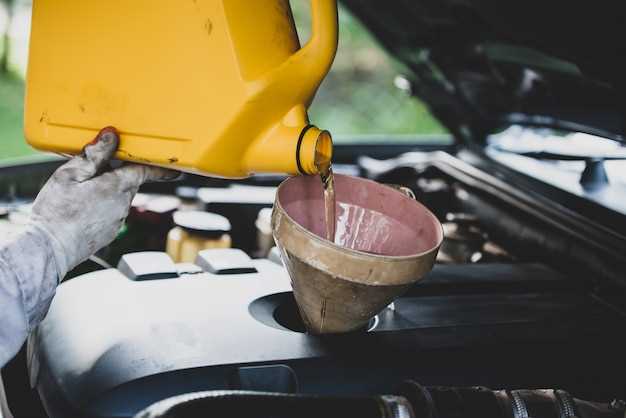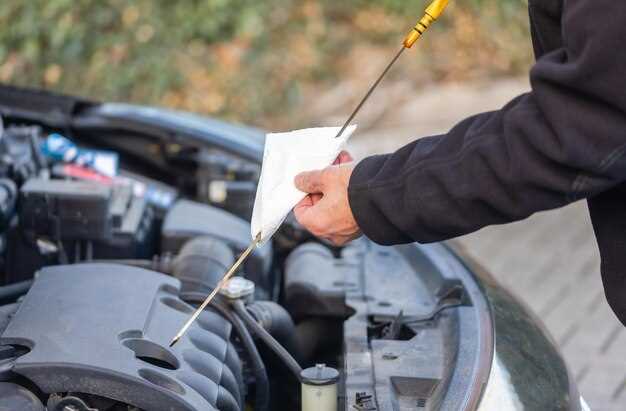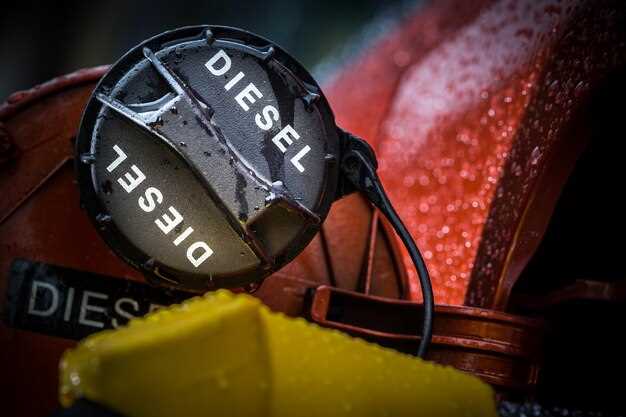
Maintaining the integrity of your Toyota Land Cruiser’s fluid levels is essential for optimal performance and longevity of the vehicle. Regular checks on crucial fluids, such as brake fluid and coolant, can prevent serious mechanical issues and enhance safety during operation. This article provides practical tips for monitoring and maintaining these vital fluids effectively.
The brake fluid in your Land Cruiser plays a critical role in ensuring that your braking system functions properly. It is imperative to check the brake fluid reservoir periodically, looking for any signs of contamination or depletion. If the fluid appears dark or gritty, it is advisable to replace it to maintain brake responsiveness and safety.
Similarly, the coolant in your vehicle helps regulate engine temperature and prevents overheating. Regular inspection of the coolant level and quality is necessary, especially before long trips. Top off the coolant as needed and consider flushing the system according to the manufacturer’s recommendations to avoid engine damage and ensure efficient operation.
Guidelines for Checking and Replacing Coolant

Regularly checking and replacing the coolant in your Toyota Land Cruiser is essential for optimal engine performance. Begin by ensuring the engine is cool before performing any maintenance. Open the hood and locate the coolant reservoir. The reservoir is usually labeled and will have minimum and maximum level indicators on the side.
To check the coolant level, visually inspect the reservoir. If the coolant is below the minimum line, it’s important to add more. Use the appropriate type of coolant, as specified in your owner’s manual, to avoid damaging the engine. Avoid mixing different types of coolant, as this can lead to chemical reactions that may reduce effectiveness.
When replacing coolant, start by draining the old coolant from the radiator. Locate the drain plug at the bottom of the radiator and ensure a suitable container is placed underneath to collect the fluid. Open the drain plug and allow the coolant to fully drain out. Remember to close the drain plug tightly once the old coolant is removed.
After draining, flush the cooling system with clean water to remove any sediment or debris. This step helps enhance the performance of the new coolant. Run water through the system until it runs clear, then drain again. Once done, refill the system with the new coolant mixture, ensuring it meets the specifications for your Toyota Land Cruiser.
Run the engine for a few minutes and check for leaks. This process allows the new coolant to circulate and provides an opportunity to check if everything is functioning correctly. It is advisable to also check the brake fluid levels during this time, as both systems play a crucial role in vehicle safety and performance.
Finally, always dispose of old coolant properly by taking it to a recycling facility, as it is toxic to both humans and pets. With regular checks and replacements, you can ensure that your engine remains cool and functions efficiently, prolonging the life of your vehicle.
Best Practices for Maintaining Brake Fluid Levels
Maintaining the proper brake fluid level in your Toyota Land Cruiser is crucial for ensuring optimal braking performance and safety. Regular monitoring and timely replacement of brake fluid can prevent significant issues and prolong the lifespan of your braking system. Here are some best practices to follow:
1. Regular Checks: Periodically check the brake fluid level, especially before long trips or after extended periods of inactivity. Ensure that the fluid is at the recommended level indicated on the reservoir, typically located near the driver’s side of the engine bay.
2. Use the Correct Fluid: Always use the specified brake fluid type for your Toyota Land Cruiser. Consult your owner’s manual for the correct specifications. Mixing different types of brake fluids can lead to decreased performance and potential damage to the braking system.
3. Inspect Fluid Condition: In addition to checking the level, inspect the fluid’s condition. Brake fluid should be clear and free of impurities. If it appears dark, contaminated, or has a burnt smell, it’s time to flush and replace it.
4. Monitor for Leaks: Look for any signs of leaks around the brake lines, calipers, and the master cylinder. A drop in brake fluid level may indicate a leak, which can severely compromise your braking capabilities. Address any leaks promptly to maintain safety.
5. Flush and Replace: Regularly flushing and replacing brake fluid is essential, as it absorbs moisture over time, which can lead to corrosion and decreased boiling points. It is typically recommended to perform this service every two years, but check your vehicle’s service manual for specifics.
6. Consider Cooling Systems: While brake fluid and coolant serve different purposes, they both play vital roles in vehicle safety. Ensure that your coolant levels are also maintained, as overheating can negatively impact brake performance by affecting the overall temperature of the braking components.
By adhering to these best practices, you can ensure that your brake fluid levels are properly maintained, contributing to the reliability and safety of your Toyota Land Cruiser.
Signs Indicating Fluid Issues in Your Land Cruiser

Identifying fluid issues early can prevent significant damage to your Toyota Land Cruiser. Here are some common signs that indicate potential problems with your vehicle’s fluids, particularly coolant and other essential fluids.
1. Overheating Engine: If your Land Cruiser’s temperature gauge frequently rises, it may indicate inadequate coolant levels. An overheated engine can be a serious issue, often leading to costly repairs.
2. Fluid Leaks: Look for any puddles or spots beneath your vehicle. A green, orange, or pink liquid might indicate a coolant leak, while clear or brown fluids suggest oil or transmission fluid issues.
3. Dashboard Warning Lights: Pay attention to any warning lights that appear on your dashboard. A coolant warning light indicates low levels or overheating, while others may signal issues with brake or transmission fluids.
4. Unusual Engine Sounds: If you hear hissing or bubbling noises from the engine compartment, this could imply coolant is boiling or leaking. Strange noises might also indicate low lubrication due to insufficient oil levels.
5. Reduced Performance: A decline in engine performance, such as sluggish acceleration or poor fuel economy, may be linked to faulty fluids. Low transmission fluid can particularly affect shifting and overall driveability.
6. Sweet Smell: If you notice a sweet smell while driving, it could indicate coolant leaking from the engine. This odor is often a sign of a problem that requires immediate attention.
7. Engine Temperature Fluctuations: Irregular temperature changes in the engine may signal inconsistent coolant flow. This can be caused by a malfunctioning thermostat or a weak water pump.
Regularly check and maintain the fluid levels in your Toyota Land Cruiser to avoid these issues. Address any signs of trouble promptly to ensure your vehicle runs smoothly and efficiently.
